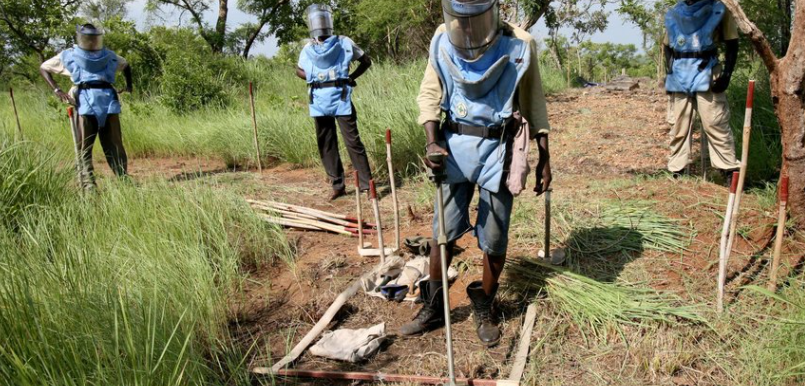The South Sudan Mine Action Authority (SSMA) has said it is alarmed by the continuous presence of landmines planted during the liberation struggle.
Officials from the SSMA and United Nations mission’s mine action unit last Wednesday visited a land mine detonation site in Gondokoro near Juba to witness the detonation of landmines.
Speaking to journalists at the event, the chairperson of SSMA, Jurkuch Barach Jurkuch said there was still a threat of landmines, mostly in the Equatoria region.
“There are still threats of land mines due to the 21 years of war that lasted from 1983 to 2005,” Barach explained. “Landmines were planted in different areas all over South Sudan but the concentration of the war was majorly in Equatoria generally.”
Barach said demining operations had been slowed by lack of resources, floods, and war but that over a billion square kilometers have been cleared on mines across South Sudan and that they remained with an area of about 400 square kilometers to be cleared.
“There is a question of lack of enough resources, insecurity, and flooding which are hindering the work for the deminers,” he said. “Today we have cleared over one billion square kilometers across the country. What is left is about 400 square kilometers area across the country.”
For his part, Fran O’Grady, the UNMISS’ chief of the mine action program said the most vulnerable people to landmines in South Sudan are children and that suspicious objects should be reported.
“If you see an item that is suspicious, do not touch it and report it to the authorities so that it can be removed,” O’Grady said. “When we look at a lot of the casualties, it is young children because children play with things. They climb around, look at scrap metal, and look at things in the rubbish pits. So, my message for the children is that if you see something, do not touch it.”
He said their operations across the country have been affected by accessibility challenges.
“Some of the challenges in South Sudan is because when there is flooding, it is harder for us to strategically get to the location to clear the mines,” O’Grady said. “Sometimes there are access issues but we need to make sure that the international community and the national partners come together and work together.”
According to the SSMA, they are currently clearing landmines along main roads, feeder roads, and agricultural land.
Most landmines in South Sudan include the anti-personnel, anti-tank, and other unexploded ordinances.




